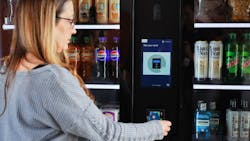Autonomous retail unlocks new growth for convenience services operators
Autonomous retail directly aligns with the consumer’s evolving desire for speed, convenience and frictionless interaction, which means opportunities will only grow for convenience services operators prepared to capitalize on them. That’s one of the key takeaways from “Autonomous food service and retail solutions: a new level of opportunity,” an exclusive on-demand webinar from VendingMarketWatch.com.
“Convenience is no longer a luxury. That’s a baseline requirement,” said Ben Thomas, the vice president of retail product strategy, North America, at Nayax, during the presentation. “Automation allows operators to extend hours, manage costs, and reach new locations without large teams.”
The confluence of pandemic-era behaviors and the wide acceptance of digital interfaces means that consumers are comfortable with — and expect — retail environments that minimize human interaction and maximize control. Autonomous formats such as smart stores, micro markets and coolers offer exactly that, enabling quick entry, tap-and-go payments, and personalized experiences. This demand is especially visible in locations where speed matters such as airports, office buildings and, more recently, residential spaces. At the same time, the definition of “retail” in unattended retail is expanding.
“The smart coolers we’ve placed in apartments are outperforming expectations. Residents treat them like a 24/7 lobby store,” Thomas said, pointing to multi-family housing as an example of how autonomous formats unlock new markets.
With smart coolers, markets and shelf-scanning technology, operators now have the tools to sell higher-value or non-traditional items. To take advantage of these opportunities, convenience services operators must shift their thinking and approach opportunities more like retailers.
